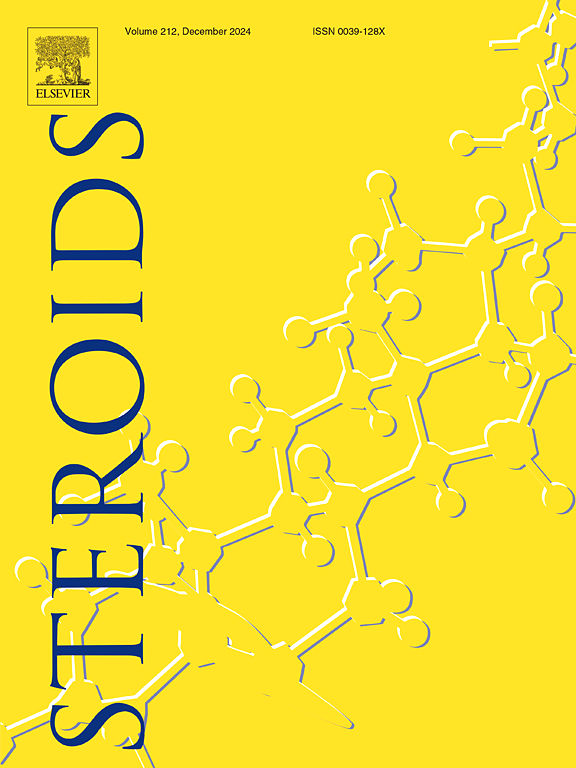Association of CYP27B1 promoter gene variants of vitamin D pathway with pulmonary tuberculosis and vitamin D levels
IF 2.1
4区 医学
Q4 BIOCHEMISTRY & MOLECULAR BIOLOGY
引用次数: 0
Abstract
Cyp27b1 polymorphisms are stated to be associated with different diseases including tuberculosis (TB). Since the gene variants located in the promoter region may have a significant influence on gene transcription/translation and Cyp27b1 enzyme is involved in critical steps in vitamin D metabolism, we aim to study whether Cyp27b1 gene promoter variants namely −1077 (C/G), −1260 (C/A) and the region immediately 5′ to the promoter −1918 (C/T) have any linkage with pulmonary tuberculosis risk/defence and to determine their influence on vitamin D level in normal healthy controls (HCs) and pulmonary tuberculosis (PTB) patients of the South Indian population. The polymerase chain reaction and restriction fragment length polymorphism (PCR-RFLP) method were used to genotype the genomic DNA after it was extracted using the salting-out approach. The Enzyme-Linked Immunosorbent Assay (ELISA) was used to measure the amount of vitamin D. In the co-dominant model, a significant association was detected with TB liability in the −1077 “GG” genotype [Odds ratio (OR): 2.10(1.18–3.73); p = 0.015]. In addition, a noteworthy linkage was detected with TB protection in the dominant model [GG vs CG + CC, OR: 0.40(0.21–0.75); p = 0.0035]. In the −1918 (C/T) variant, a substantial linkage was detected in the heterozygous −1918 “CT” genotype with TB risk [OR: 1.90 (1.05–3.44); p = 0.046] in co-dominant model, whereas a protective linkage was detected in less recurrent “TT” genotype [OR: 0.42 (0.19–0.94); p = 0.049] with TB. Furthermore, those risky genotypes are substantially linked with more TB risk in males than females. Strong links between −1077 and −1260 variations were revealed by haplotype analysis, and its haplotypes “GC” (−1077G, −1260C) were found to be significantly associated with increased TB risk. Vitamin D deficiency (<20 ng/ml) was detected at a higher frequency in PTB patients than HCs in −1077 “GG”, −1260 “CA” and −1918 “CT” risky genotypes. This needs to be confirmed by bigger sample sizes in future research.
维生素D通路CYP27B1启动子基因变异与肺结核和维生素D水平的关系
Cyp27b1多态性与包括结核病(TB)在内的不同疾病有关。由于位于启动子区域的基因变异可能对基因转录/翻译有重大影响,并且Cyp27b1酶参与维生素D代谢的关键步骤,我们的目的是研究Cyp27b1基因启动子变异- 1077 (C/G),- 1260 (C/A)和距离启动子- 1918 (C/T) 5 '的区域与肺结核风险/防御有任何联系,并确定它们对正常健康对照(hc)和南印度人口肺结核(PTB)患者维生素D水平的影响。盐析法提取基因组DNA后,采用聚合酶链反应和限制性片段长度多态性(PCR-RFLP)法进行基因分型。采用酶联免疫吸附试验(ELISA)测定维生素d的含量。在共显性模型中,−1077“GG”基因型与结核病易感性显著相关[比值比(OR): 2.10(1.18-3.73);p = 0.015]。此外,在优势模型中检测到与TB保护显著的关联[GG vs CG + CC, OR: 0.40(0.21-0.75);p = 0.0035]。在- 1918 (C/T)变异中,在杂合的- 1918“CT”基因型中发现了与结核病风险的实质性联系[OR: 1.90 (1.05-3.44);p = 0.046]在共显性模型中,而在较少复发的“TT”基因型中检测到保护性连锁[OR: 0.42 (0.19-0.94);p = 0.049]。此外,这些危险基因型与男性比女性更容易患结核病有实质性的联系。单倍型分析揭示了- 1077和- 1260变异之间的强联系,发现其单倍型“GC”(- 1077G, - 1260C)与结核病风险增加显著相关。在- 1077“GG”、- 1260“CA”和- 1918“CT”危险基因型中,PTB患者中维生素D缺乏症(<20 ng/ml)的检测频率高于hc。这需要在未来的研究中通过更大的样本量来证实。
本文章由计算机程序翻译,如有差异,请以英文原文为准。
求助全文
约1分钟内获得全文
求助全文
来源期刊

Steroids
医学-内分泌学与代谢
CiteScore
5.10
自引率
3.70%
发文量
120
审稿时长
73 days
期刊介绍:
STEROIDS is an international research journal devoted to studies on all chemical and biological aspects of steroidal moieties. The journal focuses on both experimental and theoretical studies on the biology, chemistry, biosynthesis, metabolism, molecular biology, physiology and pharmacology of steroids and other molecules that target or regulate steroid receptors. Manuscripts presenting clinical research related to steroids, steroid drug development, comparative endocrinology of steroid hormones, investigations on the mechanism of steroid action and steroid chemistry are all appropriate for submission for peer review. STEROIDS publishes both original research and timely reviews. For details concerning the preparation of manuscripts see Instructions to Authors, which is published in each issue of the journal.
 求助内容:
求助内容: 应助结果提醒方式:
应助结果提醒方式:


